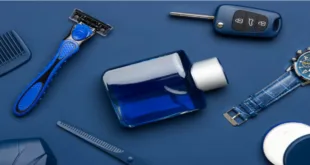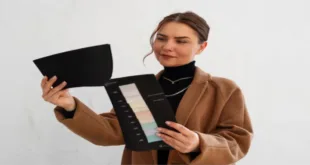A sport coat, often mistaken for a suit jacket or blazer, is a cornerstone of versatile menswear. With its roots steeped in history and its ability to adapt to various fashion trends, the sport coat has become essential in contemporary wardrobes. This article delves into the intricacies of the sport coat, exploring its history, features, and how to style it for different occasions. By the end, you’ll thoroughly understand this classic garment and be well-equipped to make informed choices for your wardrobe.
History of the Sport Coat
Origins and Early Development
The sport coat’s origins trace back to the 19th century when men’s fashion shifted from rigid, formal attire to more relaxed, casual styles. Initially, sport coats were designed for outdoor activities such as hunting and shooting, reflecting their functional roots. Early examples often featured rugged materials and practical designs, influenced heavily by British country wear. Adopting the sport coat in American fashion further transformed its image from purely functional to a stylish, versatile garment suitable for various settings.
Evolution Through Decades
As the 20th century progressed, the sport coat underwent significant changes. In the early 1900s, the sport coat became a staple in American menswear, evolving from utilitarian origins to a fashion-forward piece. The mid-century saw the introduction of more tailored fits and sophisticated fabrics, mirroring the broader trends in men’s fashion. By the late 20th century, the sport coat had firmly established itself as a key component of casual and business wardrobes. Each decade brought new designs and materials, reflecting men’s changing tastes and lifestyles worldwide.
Key Features of a Sport Coat
Fabric Types
- Wool: Wool is the most traditional and versatile fabric for sport coats. It offers natural breathability, warmth, and a classic appearance. Wool coats can be worn year-round, making them a practical choice for many occasions. The fabric’s ability to retain shape and resist wrinkles contributes to its enduring popularity.
- Tweed: Known for its durability and distinctive texture, tweed sport coats are ideal for colder weather. The fabric’s rough texture and varied patterns, such as herringbone and houndstooth, provide a unique and classic look. Tweed’s heritage and robustness make it popular for formal and casual settings.
- Cotton and Linen: For warmer climates and more casual settings, cotton and linen sports coats offer comfort and a laid-back style. Cotton provides a lighter feel, while linen is prized for its breathability and relaxed appearance. Both fabrics are excellent for summer wear, though they wrinkle more easily than wool or tweed.
Design Elements
- Lapels: Sport coats feature different lapels, including notch, shawl, and peak. The notch lapel, characterized by a small cutout where the collar meets the lapel, is the most common and versatile. With its rounded edge, the shawl lapel is often seen on more formal or evening jackets. With its pointed edges, the peak lapel adds a touch of elegance and is frequently used in more formal or high-fashion designs.
- Pockets: The design of a sports coat’s pockets can vary, including flap pockets, patch pockets, and ticket pockets. Flap pockets are standard and classic, while patch pockets offer a more casual, relaxed appearance. Ticket pockets, a smaller pocket above the main pocket, add functionality and style.
- Buttons: Sportcoats can be single-breasted with one or two buttons or double-breasted with four or six buttons. Single-breasted coats are more versatile and commonly worn, while double-breasted designs are often associated with more formal attire.
Fit and Structure
The fit of a sports coat significantly impacts its overall appearance and comfort. Tailoring options range from slim to regular to relaxed fits, each catering to different body types and style preferences. A well-fitted sports coat should contour the shoulders and chest while allowing for ease of movement. Proper fit ensures the coat looks sharp and maintains its shape over time.
How to Choose the Right Sport Coat
Body Type Considerations
Selecting the right sports coat involves understanding how different styles fit various body types. A slim-fit sport coat enhances the body’s natural lines without excess fabric for a slimmer physique. Those with a more average build might opt for a regular fit, which offers a balanced silhouette. A relaxed fit provides extra room for those who prefer a more comfortable, less structured look.
Occasion and Dress Code
Sport coats are versatile and can be styled for various occasions. Pair a sports coat with jeans or chinos and a casual shirt for casual settings. Wear a sports coat with dress pants and a button-down shirt in business casual environments. A tie and coordinating accessories, such as pocket squares and polished shoes, elevate the outfit for semi-formal or formal events.
Color and Pattern Choices
When selecting a sports coat, consider both color and pattern. Classic colors like navy, grey, and brown are versatile and suitable for most occasions. Modern colors, such as burgundy or forest green, can add a contemporary twist to your wardrobe. Patterns like houndstooth, plaid, and stripes offer various traditional and trendy styles.
Styling Tips
Casual Looks
Combine a sports coat with jeans or chinos and a casual shirt for a relaxed appearance. Opt for loafers or casual sneakers to complete the look. This combination is ideal for informal gatherings or weekends.
Business Casual
Pair a sports coat with dress pants and a dress shirt in a business casual setting. A coordinating tie and dress shoes add a polished touch. This outfit balances formal and relaxed, making it suitable for office environments and meetings.
Semi-Formal and Formal Attire
For semi-formal events, a sports coat can be paired with dress trousers and a tie. To enhance the overall look, incorporate accessories like pocket squares and cufflinks. For formal occasions, pair a more structured sports coat with dress shoes and a well-chosen tie or bow tie.
Maintenance and Care
Cleaning and Storage
Proper care ensures the longevity of your sports coat. Dry cleaning is generally recommended for wool and tweed coats to maintain structure and appearance. Spot cleaning and occasional machine washing may be appropriate for cotton and linen coats. Store your sports coat on a padded hanger in a breathable garment bag to prevent wrinkles and preserve its shape.
Repairs and Alterations
Address minor issues, such as loose buttons or small tears, promptly to avoid further damage. If a sports coat does not fit perfectly, consider visiting a tailor for adjustments. Tailoring can enhance the fit and appearance, making the coat look custom-made.
Buying Tips and Brands
Top Brands and Designers
Several brands and designers are renowned for their quality sport coats. Names such as Brooks Brothers, Ralph Lauren, and Hugo Boss offer a range of styles and fabrics. When purchasing, look for craftsmanship details such as stitching, lining, and fabric quality to ensure you invest in a high-quality garment.
Budget Considerations
Sport coats are available at various price points. High-end options offer premium fabrics and detailed craftsmanship, while more affordable choices can still provide style and functionality. Look for sales, discounts, and off-season purchases to get the best value for your budget.
Common Mistakes to Avoid
Over- or Under-Styling
Finding the right balance between formal and casual is crucial. Avoid overly formal styling for casual events; conversely, don’t underdress for semi-formal or business casual settings. Properly matching the sports coat with the occasion ensures you look appropriate and stylish.
Fit Issues
Avoid common fitting problems such as overly tight shoulders or loose sleeves. A well-fitted sports coat should align with your natural body shape without excessive bunching or pulling. Regular fittings and adjustments by a tailor can help address these issues.
Neglecting Maintenance
Regular care is essential for keeping your sports coat in top condition. Neglecting maintenance can lead to wear and tear, affecting the garment’s appearance and longevity. Implementing proper cleaning and storage practices extends the life of your sport coat.
Case Studies and Real-Life Examples
Celebrity and Fashion Icon Styles
Many celebrities and fashion icons have popularized the sport coat, showcasing various styles and adaptations. Figures like David Beckham and Ryan Gosling have demonstrated how a well-chosen sports coat can enhance casual and formal outfits, influencing trends and popularizing certain looks.
Success Stories of Brands and Designers
Brands such as Canali and Zegna have made significant contributions to the sport coat market, setting standards in design and quality. Their success stories highlight the importance of innovation and craftsmanship in maintaining the sport coat’s relevance and appeal.
Conclusion
The sport coat remains a timeless and versatile element of men’s fashion. Understanding its history, features, and styling options allows you to make informed choices and incorporate this essential piece into various aspects of your wardrobe. Whether dressing up for a formal event or keeping it casual for a weekend outing, the sports coat offers functionality and style. Embrace its versatility and explore how it can enhance your personal style. As fashion continues to evolve, the sport coat will remain a staple, adapting to new trends while preserving its classic charm.
Frequently Asked Questions (FAQs)
What is the difference between a sports coat and a blazer?
A sports coat is often more casual and versatile than a blazer, which is typically part of a suit. Sport coats can be paired with a wider range of pants and shirts, whereas blazers are usually worn with matching trousers.
What types of fabrics are best for sport coats?
Common fabrics include wool for all-season wear, tweed for colder climates, and cotton or linen for warmer weather. Each fabric offers different benefits in terms of comfort and style.
How should a sports coat fit?
A well-fitting sports coat should align with your shoulders, taper at the waist, and allow for comfortable movement. It should not be too tight or loose, and the sleeves should end at your wrist bone.
Can I wear a sports coat with jeans?
Yes, sport coats are versatile and can be worn with jeans for a casual look. Pair with a casual shirt and loafers or sneakers for a relaxed outfit.
How often should I clean my sports coat?
The frequency of cleaning depends on fabric and wear. Wool and tweed coats typically require professional cleaning, while cotton and linen may need more frequent spot cleaning. Always follow care instructions specific to your coat.
What are common mistakes to avoid when buying a sports coat?
Avoid choosing a coat that’s either too tight or loose, neglecting maintenance, and over- or under-styling. Ensuring a good fit and proper care are key to maintaining a stylish appearance.
 Nt Design
Nt Design




